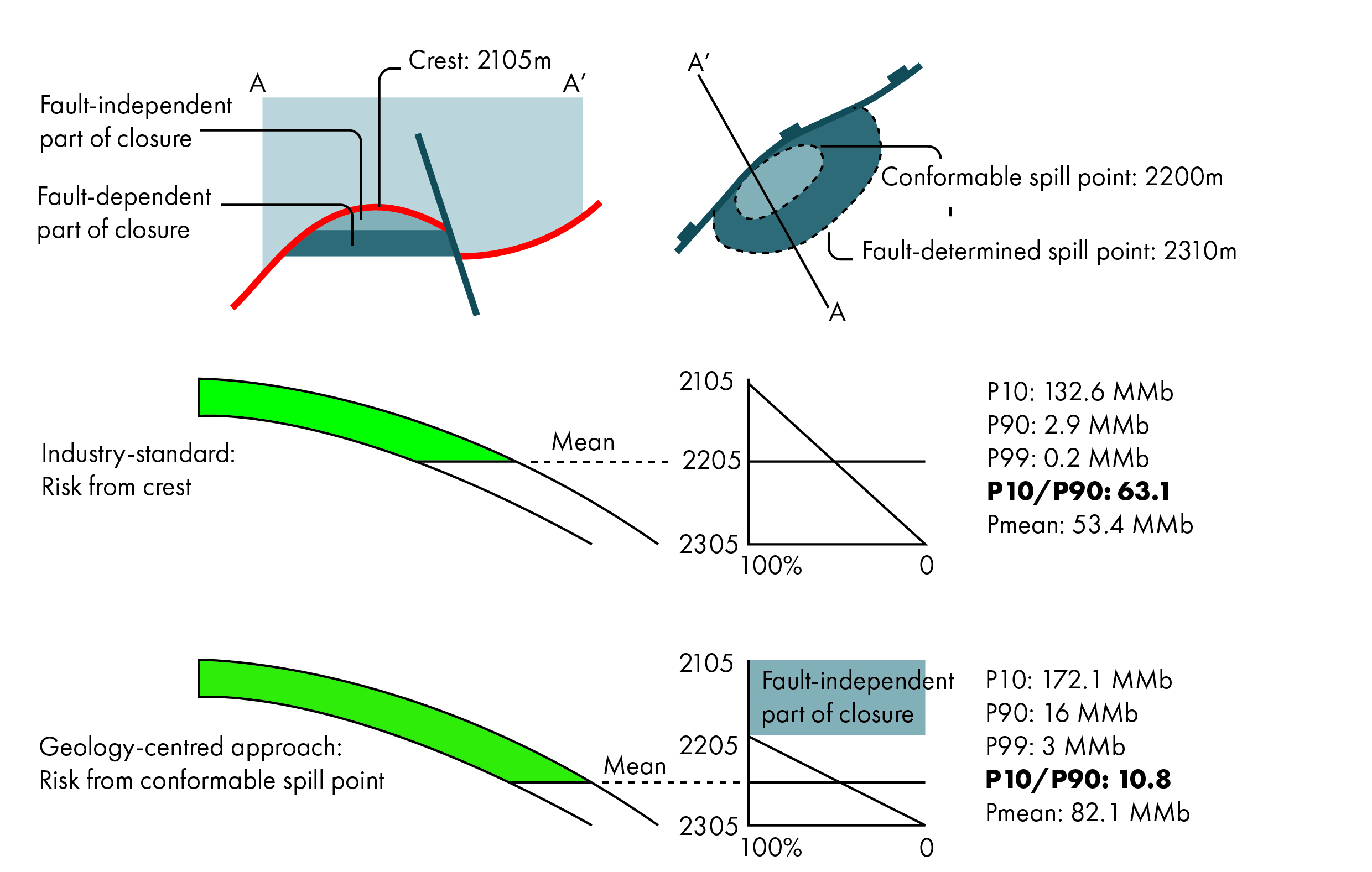In many exploration departments, the ratio between the low-case P90 volume and the high-case P10 volume of a prospect is used to assess the distribution of its volume estimates.
Frontier prospects are thereby thought to have a P10/P90 ratio between 40 and 50, whilst near-field exploration targets are expected to have a value between 5 and 10, reflecting the higher uncertainty and therefore higher spread in possible volumes for more frontier prospects.
But does it make sense to create these buckets in which prospects need to fall? No!
The main reason is that the P99 and P90 are often chosen at too low a value, pinned at the “smallest identifiable hydrocarbon volume”, typically in the order of 0.1 to 1 MMb (million barrels) recoverable. However, when looking at the geology, it is often justifiable to assume a higher P99/P90, related to the first likely spill or leak point of the structure. That is further illustrated in the example below.

Let’s say we have a closure that is partly 4-way dip-controlled and partly fault-controlled. Also, it is situated in a basin where the sealing unit is proven, and fields have been found in similar settings nearby.
In the “conventional” way, geologists would start risking this prospect from very near the top of the crest, resulting in a Pmean volume in this case of 53.4 MMb and a P10/P90 ratio of 63.1. However, given the evidence from pools nearby, it can be argued that the risk element should only start at the “conformable” spill point where fault sealing becomes a factor at play. In that case, the P90 increases to 16 MMb, and the Pmean to 82.1 MMb. As such, the P10/P90 ratio changes to 10.8, so a lot less “frontier” than the initial value. And that is justifiable, given the evidence of a working petroleum system in nearby pools as well as the observation of a small but still important non-fault controlled closure.
Based on this, it can be concluded that the P10/P90 ratio should not be used to force prospects in a maturity bucket. Instead, prospects should be evaluated based on the geology you see in each individual case. The P10/P90 ratio might be handled in a more generic way; however, a too low ratio – often below 10 – is mostly caused by assuming too high a P90 and P100 volume.
This is the fifth of a series of articles based on work and experience from the GIS-Pax team in Australia, as presented by Ian Longley in a series of videos on LinkedIn.
Find the previous articles here:





